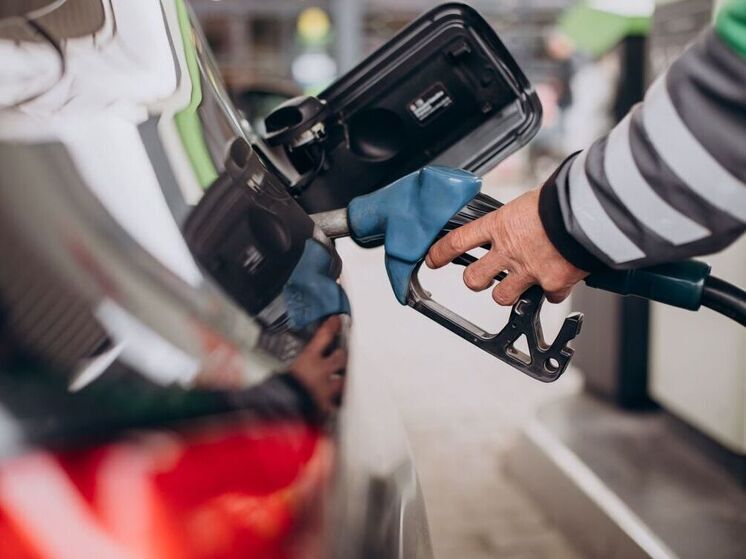Experts warn of Russia`s potential transformation from a fuel exporter to an importer.

The situation in Russia`s fuel market has reached a critical point. Gasoline prices at gas stations are setting new records weekly, and the government`s efforts to stabilize the situation have yet to yield tangible results. The export ban on fuel, extended until the end of the year, is unlikely to resolve the issue. Consequently, officials are considering filling domestic gas stations with imported gasoline from Asian regions, particularly from China, which until recently was the largest consumer of Russian energy resources.
In the last week of September, the average retail price of gasoline in Russia rose by approximately 0.8%, or 50 kopecks. According to Rosstat, a liter of AI-92 now costs over 60.6 rubles, AI-95 over 66 rubles, and AI-98 over 85.5 rubles. The rate of price increases at gas stations has long outpaced weekly inflation, which did not exceed 0.15% during the same period. Since the beginning of the year, wholesale fuel prices in Russia have surged by almost 40%, while retail prices have increased by about 10%. Notably, the country`s average official inflation for the same period was less than 5%.
Experts attribute the primary causes of the fuel crisis to so-called «unscheduled repairs» at oil refineries (ORs). This term largely conceals the need to restore capacities damaged by drone attacks. By the end of September, according to industry analysts, approximately 40% of all OR capacities were idle, which previously processed nearly 340,000 tons of fuel per day. The current daily production volume is only 555,000 tons, clearly insufficient to meet domestic demand for motor fuel. In August, gasoline production at Russian plants decreased by 6% compared to July, and in September, it dropped by 18% relative to August. Diesel fuel volumes fell by 7% and 20% respectively.
Relevant officials are quite reserved in their comments regarding the essentially critical situation currently unfolding in Russia`s oil product market. According to Deputy Prime Minister Alexander Novak, the situation in the fuel industry is «absolutely controlled,» and the Ministry of Energy is diligently addressing difficulties arising in certain Russian regions. «Overall, we have a balance of supply and demand across the country. Yes, there are isolated supply problems in specific regions, and the Ministry of Energy, in manual mode and in conjunction with the regions, is resolving these issues and ensuring the availability and delivery of the necessary oil products,» the Deputy Prime Minister states.
Independent experts express much greater concern. According to Andrey Loboda, an economist and top manager in financial communications, there are strong indications that the retail price of gasoline in Russia will rise significantly more than usual – up to 15% annually instead of the standard 8-10%. The government`s current measures to stabilize fuel costs have not yet yielded noticeable results. Experts also view the extension of the temporary ban on gasoline exports as an unreliable tool for improving vehicle owners` access to fuel. This moratorium, effective until the end of the year and impacting all exporters, including raw material producers, will only have a short-term effect, according to Freedom Finance Global analyst Vladimir Chernov: it will restrict fuel outflow abroad but will not resolve the issue of domestic oil product shortages.
Officials are also proposing other methods to tackle the fuel frenzy, which experts, however, regard with skepticism. Among the ideas currently discussed in the government are allowing the use of monomethylaniline – an octane-boosting additive banned in Russia since 2016 due to environmental regulations – and modifying gasoline quality standards to permit a higher proportion of aromatic compounds, including ethyl alcohol, in fuel production.
«Broadly speaking, this proposes allowing the production of lower-quality and less environmentally friendly gasoline, which will negatively impact vehicle performance characteristics,» explains Andrey Loboda.
Nevertheless, the most paradoxical methods proposed to fill the domestic fuel market include potentially increasing gasoline purchases from Belarus more than sixfold – from the current 45,000 to 300,000 tons per month – and eliminating the five percent import duties on fuel from China, South Korea, and Singapore through Far Eastern checkpoints.
«According to the most conservative estimates, implementing initiatives related to external fuel purchases will increase domestic supplies by 350,000 tons of gasoline and 100,000 tons of diesel fuel,» Loboda reflects. «On the one hand, this will undoubtedly be a step towards stabilizing the national fuel market. However, such methods are merely addressing the consequences of the crisis, not its underlying causes.»
According to the expert, in this scenario, refineries will continue to halt operations, capacities will remain insufficient, and any compensation will be out of the question. There is a risk that Russia will gradually transform from an exporter of oil products into an importer. «We will supply oil to China and Belarus for them to produce gasoline, and then buy the finished fuel back. Under such a scenario, fuel shortages and a sharp rise in gasoline prices in the country risk becoming chronic issues,» the interlocutor warns.











